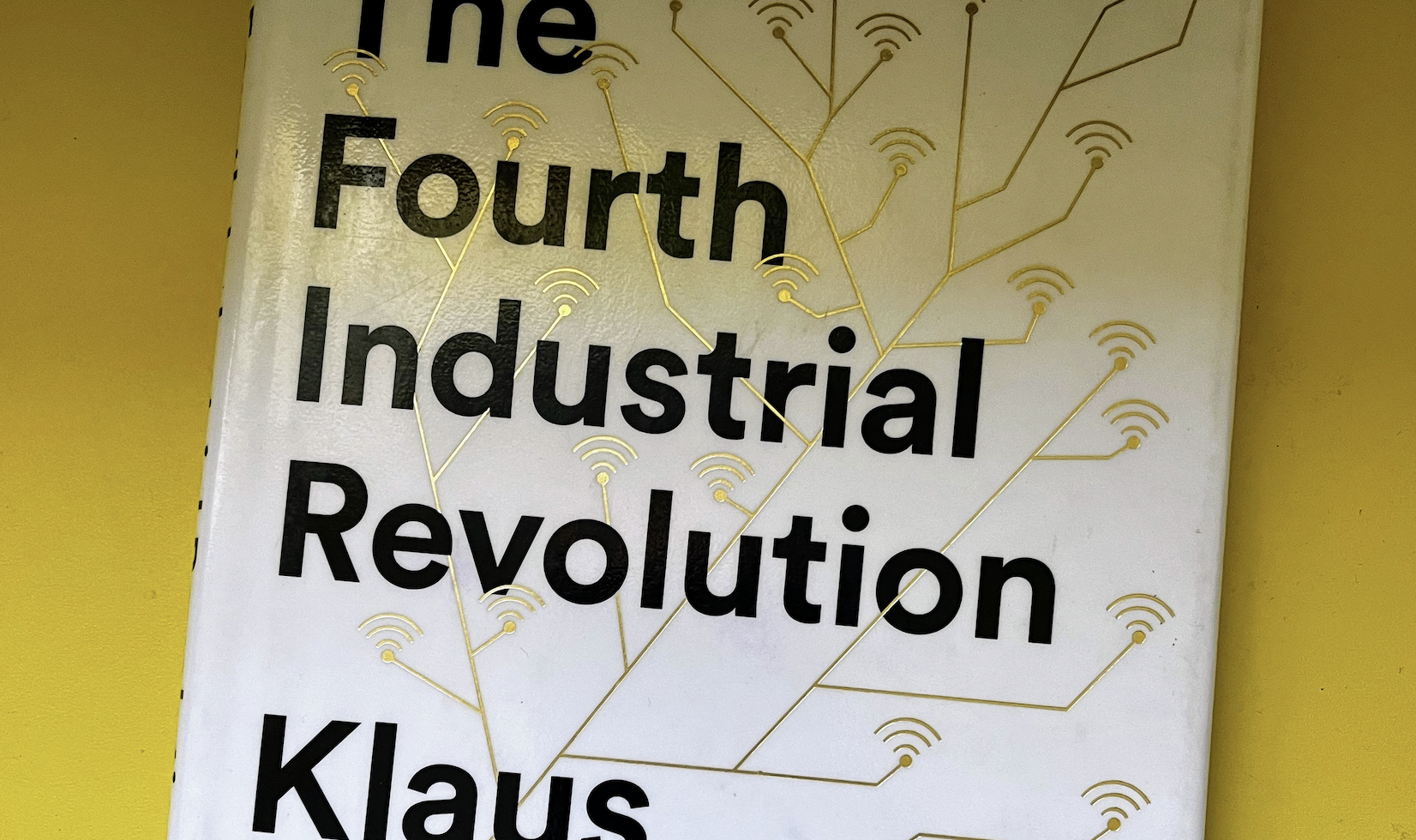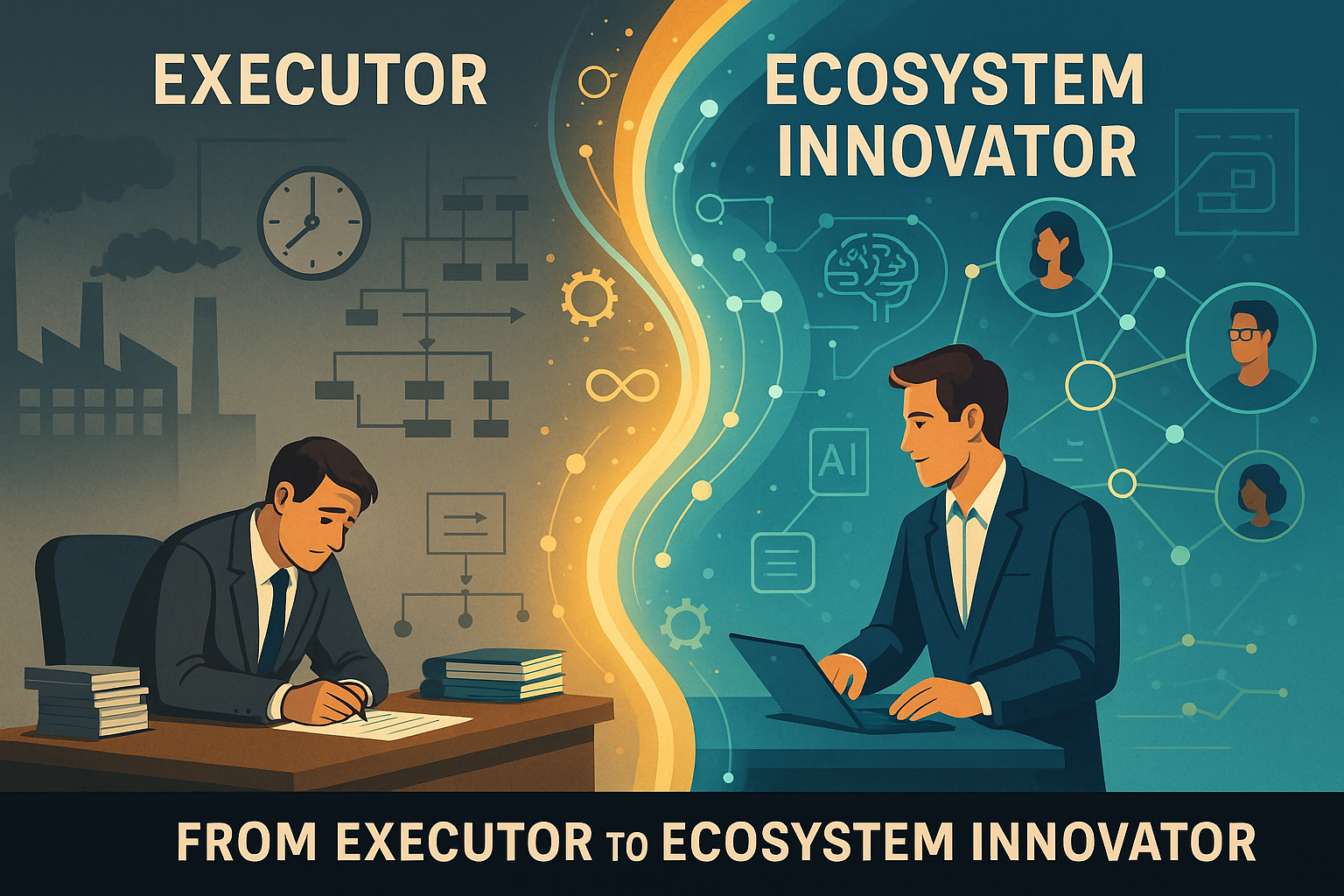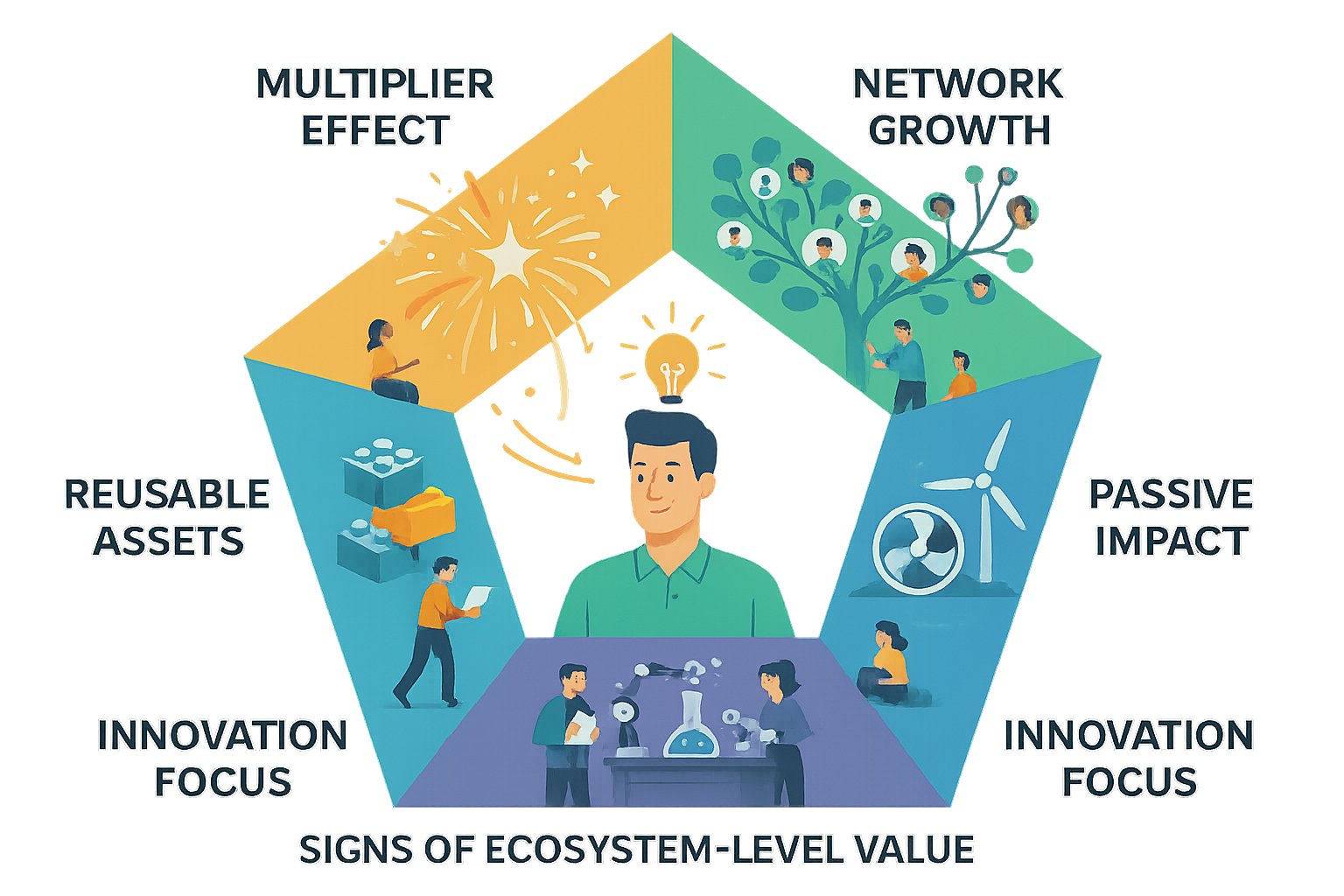From Executor to Ecosystem Innovator, Thriving in the Fourth Industrial Revolution
“As all these trends happen, the winners will be those who are able to participate fully in innovation-driven ecosystems by providing new ideas, business models, products and services, rather than those who can offer only low-skilled labor or ordinary capital.” — Klaus Schwab, The Fourth Industrial Revolution
Three years ago, I was working 60-hour weeks, delivering project after project with meticulous precision. My performance reviews were stellar, my clients were satisfied, and by every traditional metric, I was succeeding.
Yet something felt fundamentally wrong. Despite all my hard work, I wasn’t building anything lasting. I wasn’t creating systems that could work without me, and I certainly wasn’t innovating in ways that mattered.
Then I read Schwab’s words, and everything clicked. I realized I was trapped in an outdated model of value creation—one where success was measured by how much I could execute, not by how much I could innovate.
That moment marked my intention to transition from being an executor to becoming an ecosystem innovator.
The Age of Innovation-Driven Ecosystems
The Fourth Industrial Revolution isn’t just about new technologies—it’s about a fundamental shift in how value is created and distributed.
As Klaus put it ten years ago, we’re living through a convergence of artificial intelligence, biotechnology, quantum computing, and interconnected digital platforms that’s reshaping every aspect of how we work and live.
It was true back then and it is definitely more so today.
But what exactly are “innovation-driven ecosystems”? Think of them as interconnected networks where ideas, tools, and people collaborate to create exponential value.
These ecosystems thrive on:
- Platform thinking: Building systems that enable others to create value
- Network effects: Where each new participant makes the ecosystem more valuable for everyone
- Collaborative innovation: Co-creating solutions rather than competing in isolation
- Exponential technologies: Leveraging AI, automation, and digital tools to scale impact
The critical shift here is from effort to leverage.
In the industrial age, working harder and longer was the path to success.
Today, it’s about working smarter—creating systems, tools, and connections that amplify your impact far beyond what individual effort could achieve.
The Old Model vs. The New Reality
The traditional success formula was beautifully simple: get good grades, gain experience, show loyalty, climb the ladder.
Value was linear—more hours meant more output, more experience meant more compensation.
We were, and still, rewarded for being reliable executors.
The old model valued:
- Time spent (hours worked)
- Experience accumulated (years in role)
- Compliance and consistency
- Individual contribution
- Incremental improvements
The new reality demands:
- Value created (impact generated)
- Adaptability and continuous learning
- Creativity and innovation
- Network contribution
- Exponential thinking
This shift isn’t just philosophical—it’s economic. Companies now pay premiums for people who can build AI workflows that save hundreds of hours, create content that reaches millions, or design systems that enable others to succeed.
Meanwhile, roles focused purely on execution are increasingly automated or “commoditized”.
Your Turning Point
Three years back, my awakening came during a particularly intense project deadline. I was manually processing data reports that took me 8 hours every week—a task I’d been doing for months. In a moment of frustration, I decided to build an automated workflow using Python and some basic APIs.
What took me 8 hours every week now took the system 8 minutes.
But here’s what really struck me: I didn’t just save time for myself. I packaged that solution and shared it with my team, my network, and eventually wrote about it online.
That single automation has now been used by hundreds of people, saving thousands of collective hours.
That’s when Schwab’s quote hit me like lightning. I had stopped offering just my labor and started contributing to an innovation ecosystem.
I wasn’t just working in the system—I was improving the system itself.
Practical Ways to Participate Fully
The transition from executor to ecosystem innovator isn’t abstract—it requires specific, actionable strategies. Here’s what I’ve learned works:
Build and Share Tools
Don’t just use tools—create them. Whether it’s an AI prompt template, a productivity workflow, or a simple automation script, building tools that others can use multiplies your impact exponentially.
I started by documenting my processes, then turning them into repeatable frameworks. My homelab experiments became tutorials. My workflow optimizations became templates others could adapt. Each tool I built served not just my immediate needs but created value for an entire community.
Engage with High-Signal Communities
Join communities where innovation happens, not just where work gets discussed. This means participating in Discord servers for AI enthusiasts, contributing to open-source projects, or joining professional groups focused on emerging technologies.
The key is to contribute meaningfully—share insights, help solve problems, and build relationships with other innovators. These connections often lead to collaborative opportunities that no amount of individual effort could achieve.
Share Your Knowledge Relentlessly
Every problem you solve, every system you build, every insight you gain—share it. Write blog posts, create video tutorials, speak at meetups, or mentor others. This isn’t just altruism; it’s ecosystem building.
When you share knowledge, you’re not just helping others—you’re establishing yourself as a thought leader and attracting opportunities that align with your expertise.
The most successful people I know are those who teach others what they’ve learned.
Automate and Scale Repeatable Work
Identify the tasks you do repeatedly and systematize them. This might mean building macros, creating templates, or developing workflows that can handle routine decisions.
The goal isn’t to eliminate work entirely but to free up your cognitive capacity for higher-value activities.
I now spend less time on routine tasks and more time on strategy, relationship building, and innovation.
This shift has been transformative for both my productivity and my professional satisfaction.
Embrace Ownership and Creation
Stop thinking like an employee and start thinking like an owner. This doesn’t necessarily mean starting a business—it means taking ownership of outcomes, creating intellectual property, and building assets that appreciate over time.
Whether it’s a blog, a course, a tool, or a methodology, create something that can generate value independently of your direct involvement.
This is how you move from selling time to selling value.
A Call to Action for Others
The Fourth Industrial Revolution isn’t coming—it’s here. And the book was written ten years ago as I write these lines.
The question isn’t whether things will change, but whether you’ll be positioned to benefit from that change.
I challenge you to audit your current work through this lens:
Are you primarily executing tasks that could be automated, or are you creating systems that enable others to succeed?
Are you offering labor and capital, or are you contributing ideas, tools, and innovation?
The transition from executor to ecosystem innovator isn’t easy, but it’s necessary. It requires learning new skills, building new networks, and fundamentally rethinking how you create value. But for those willing to make the shift, the rewards are exponential.
Start today by asking yourself:
- What repetitive work can I systematize or automate?
- What knowledge do I have that others could benefit from?
- How can I contribute to communities rather than just consume from them?
- What tools or frameworks could I build that would help others succeed?
The winners of the Fourth Industrial Revolution won’t be those who work the hardest—they’ll be those who work the smartest, building and participating in innovation-driven ecosystems that create value for everyone involved.
The choice is yours: remain an executor in an automated world, or become an innovator in an ecosystem that rewards creation, collaboration, and exponential thinking.
5 Signs You’re Creating Ecosystem-Level Value
-
Multiplier Effect: Your work enables others to be more productive or successful
-
Reusable Assets: You’re building tools, frameworks, or content that can be used repeatedly
-
Network Growth: People seek you out for advice, collaboration, or opportunities
-
Passive Impact: Your contributions continue creating value even when you’re not actively working
-
Innovation Focus: You’re solving problems that don’t yet have established solutions
Ready to make the transition? Start by identifying one repetitive task you can automate this week, then share your solution with others.
Small steps toward ecosystem thinking can lead to exponential results.


